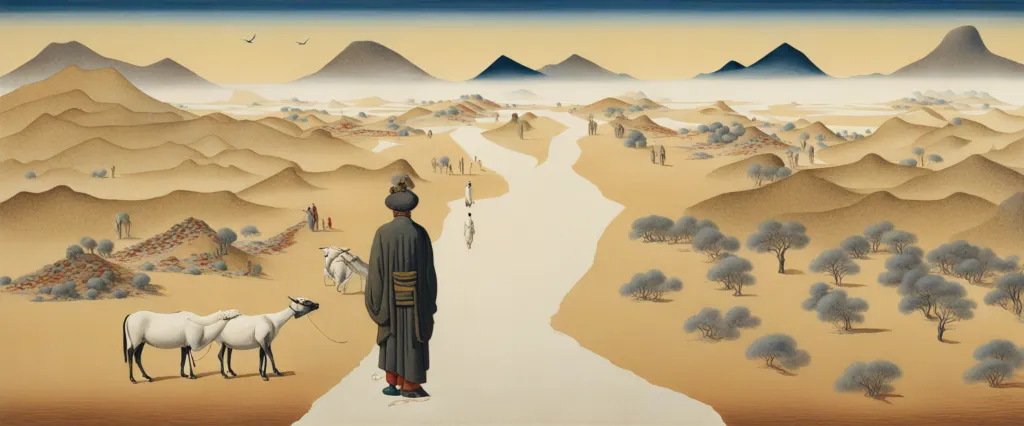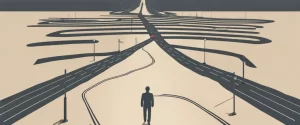
In the realm of historical non-fiction, few genres captivate as much as comparative studies that delve deep into the interconnectedness of civilizations and the global exchange of ideas, goods, and cultures. Two books that have made notable contributions to this fascinating genre are “The Silk Roads” by Peter Frankopan and “1493” by Charles C. Mann. These meticulously researched works offer readers a mesmerizing glimpse into pivotal periods of human history, exploring the impact of global trade routes and the transformative consequences of intercontinental exchanges. While both authors set out to uncover the intricate webs of connectivity that shaped our world, they do so from distinct vantage points and periods, offering unique perspectives on our shared global history. Through examining the striking similarities and contrasting narratives of these two books, we can gain an enriched understanding of the forces that have shaped and continue to shape the global landscape. By scrutinizing the expertly woven threads of the Silk Roads and the profound consequences of Columbus’s voyage, we can navigate a terrain of historical exploration that reveals the remarkable interconnectedness of the past and present, and the fascinating consequences of cross-cultural encounters.
Brief Summary of Two Books
The Silk Roads by Peter Frankopan
The Silk Roads by Peter Frankopan is a historical non-fiction book that provides an alternative perspective on global history by emphasizing the overlooked significance of Asia and the Middle East in shaping the world as we know it today.
Frankopan argues that the traditional Eurocentric view of history has ignored the central role that Asia played in creating trade networks, cultural exchange, and the spread of great civilizations. The author focuses on the Silk Roads, a vast network of trade routes that connected Asia, Europe, and Africa from ancient times to the early modern period.
The book highlights the pivotal moments and civilizations that influenced the Silk Roads, starting from the rise of the Persian Empire in the sixth century BCE. It explores the impact of Alexander the Great’s conquests, the expansion of the Roman Empire, and the rise of Islam, which played a significant role in shaping the Silk Roads and promoting trade and cultural exchange.
Frankopan takes a global approach in examining the interconnectedness of different regions and the agency of Asian and Middle Eastern societies in shaping the world. He demonstrates how ideas, technologies, and products were exchanged along these trade routes, transforming societies and empowering certain regions.
The author also delves into the political and economic motivations behind the exploration and colonization of the New World, arguing that these ventures were fueled by the desire to dominate and control the trade routes of Asia. By examining the historical events surrounding the Silk Roads, Frankopan challenges the perception that Europe was the sole driving force behind global development.
In conclusion, The Silk Roads sheds light on the historical significance of Asia and the Middle East in shaping world civilizations. It challenges the traditional Western-centric narrative and highlights the interconnectedness and influence of different cultures and regions along the Silk Roads.
1493 by Charles С. Mann
1493 by Charles C. Mann is a historical book that explores the lasting impact of Christopher Columbus’ Voyages of Discovery on the world. The book focuses on the period following Columbus’ initial voyage in 1492 and examines the complex ecological, economic, and cultural transformations that occurred as a result.
Mann argues that the historical narrative typically taught in schools, which paints a picture of Columbus as the sole discoverer and conqueror of the New World, oversimplifies the complex global and interconnected processes that unfolded during this era. The real impact of Columbus’ voyages was the exchange of plants, animals, people, and diseases between the Americas, Europe, and Africa. This intercontinental exchange, termed the Columbian Exchange, had a profound and far-reaching impact on the world.
Mann explores various aspects of the Columbian Exchange in detail, including the introduction of new crops such as maize, potatoes, and tomatoes that revolutionized agriculture and led to population booms in different regions. He also delves into the devastating consequences of diseases brought by Europeans, such as smallpox, which decimated indigenous populations.
The book also examines the consequences of the exchange of peoples, highlighting the forced migration of millions of Africans to the Americas as slaves. Mann explores the social and cultural ramifications of this forced migration and how it shaped the racial dynamics of the Americas.
Furthermore, 1493 delves into the ecological impact of the Columbian Exchange. The introduction of new animals, such as horses and cattle, transformed the environment and allowed for the rise of new industries like ranching. However, the ecological changes were not without their negative consequences, leading to deforestation, soil erosion, and the spread of invasive species.
Mann weaves together a vast array of historical evidence, scientific research, and personal narratives to provide a comprehensive and thought-provoking analysis of the profound and lasting consequences of Columbus’ voyages. The book challenges conventional historical narratives and presents a more nuanced perspective on the complex web of global interactions that ensued in the wake of the Age of Discovery.
Comparison between Two Books

Similarities in Global Landscape
Both The Silk Roads by Peter Frankopan and 1493 by Charles C. Mann explore the global landscape in different time periods, but they share several similarities.
Firstly, both books emphasize the interconnectedness of different regions and the exchange of goods and ideas across vast distances. In The Silk Roads, Frankopan delves into the historical routes connecting Europe, Asia, and Africa, highlighting how these networks shaped trade, cultural diffusion, and the spread of religions. Similarly, Mann in 1493 focuses on the impact of Columbus’s voyages and the subsequent Columbian Exchange, demonstrating the far-reaching consequences of the exchange of food, diseases, and people between the Americas, Europe, Asia, and Africa.
Secondly, both authors highlight the role of economic forces in shaping the global landscape. Frankopan examines how trade routes were driven by the search for luxury goods, such as silk, spices, and precious metals, which in turn fueled economic growth and competition between empires. Mann, on the other hand, explores how the discovery and cultivation of new crops, such as maize, potatoes, and tobacco, transformed economies and led to demographic shifts and the rise of empires.
Additionally, both books emphasize the significance of environmental factors in shaping the global landscape. Frankopan discusses how geographical features, such as rivers and deserts, influenced the development of trade routes and the distribution of power. Mann, too, explores how the introduction of new plants and animals affected ecosystems and altered landscapes, leading to the rise and decline of civilizations.
Furthermore, both authors highlight the role of technological advancements in facilitating global connections. Frankopan discusses the impact of innovations like paper, compasses, and shipbuilding techniques, which made it possible for goods, knowledge, and people to travel longer distances. Mann, in contrast, focuses on the transformative effects of technologies like the printing press and the cultivation of cash crops on global economies and societies.
Overall, The Silk Roads and 1493 offer parallel perspectives on the global landscape, stressing the interconnectedness of different regions, the influence of economic forces, the importance of environmental factors, and the role of technological advancements in shaping the history of human societies.
Divergences in Global Landscape
The Silk Roads by Peter Frankopan and 1493 by Charles C. Mann are two distinct works that explore the historical development and impact of trade and globalization on the global landscape. While both books discuss similar themes, they differ significantly in their perspectives and areas of focus.
In The Silk Roads, Frankopan presents a new interpretation of world history by emphasizing the significance of Central Asia and the Silk Road trade routes in shaping global affairs. He argues that the traditional Eurocentric narrative overlooks the interconnectedness of various civilizations and regions, particularly those along the Silk Roads. Frankopan asserts that these routes had a profound influence on the rise and fall of empires, the exchange of goods, ideas, and religions, and the remapping of the world’s economic and political powers. By highlighting the importance of Central Asia, Frankopan challenges the prevailing views and offers a fresh understanding of the global landscape.
In contrast, 1493 by Charles C. Mann focuses on the aftermath of Christopher Columbus’s voyages and the ensuing changes that occurred as a result of the European expansion. Mann explores the far-reaching consequences of this encounter between Europe and the Americas, primarily in terms of biology, ecology, and globalization’s impact on global trade networks. He examines how the exchange of plants, animals, and diseases transformed both the Old and New Worlds, fundamentally reshaping their landscapes. Additionally, Mann explores the economic and social consequences of the global exchange, such as the growth of colonial powers and the rise of the Spanish Empire.
The main divergence between the two books lies in their geographical scope. The Silk Roads primarily delves into the history and significance of Central Asia and the broader interconnectedness of civilizations along these routes. Its focus extends from the ancient past to the present, encompassing a wider geographical area that includes Asia, Africa, Europe, and the Middle East. In contrast, 1493 concentrates on the impact of European expansion in the Americas and the subsequent transformation of ecosystems and commerce, predominantly within the Atlantic World.
Another divergence lies in their chronological emphasis. The Silk Roads offers a more comprehensive historical analysis, extending from ancient times to the present. In contrast, 1493 primarily concentrates on the period following Columbus’s arrival in the Americas, from the 15th century to the present. This narrower timeline allows Mann to delve deeper into the specific consequences and global transformations brought about by the European encounter with the New World.
In conclusion, while both The Silk Roads and 1493 explore the impact of trade and globalization on the global landscape, they differ in their geographical scope and chronological focus. The Silk Roads emphasizes the interconnectedness of diverse regions along the ancient trade routes, providing a new perspective on world history. On the other hand, 1493 analyzes the consequences of European expansion in the Americas and its profound ecological, economic, and social effects, primarily in the Atlantic World.

Conclusion
Both “The Silk Roads” by Peter Frankopan and “1493” by Charles C. Mann are highly regarded books that offer unique perspectives on world history. It ultimately depends on your interests and what you are looking to gain from reading.
“The Silk Roads” focuses on the historical significance of the ancient trade routes connecting different regions of the world, particularly Asia, Europe, and the Middle East. Frankopan explores the political, cultural, and economic impact of these routes throughout history. If you are interested in learning about the interconnectedness of civilizations and the development of global trade, “The Silk Roads” is a compelling choice.
On the other hand, “1493” delves into the consequences of the Columbian Exchange, which refers to the widespread exchange of plants, animals, and diseases between the Eastern and Western Hemispheres following Christopher Columbus’s voyages. Charles C. Mann examines the profound transformations caused by this exchange and its impact on economies, ecosystems, cultures, and power dynamics. If you are interested in exploring the far-reaching consequences of European colonialism and the birth of globalization, “1493” is an excellent choice.
Ultimately, both books offer valuable perspectives on significant historical events, but the decision of which one is more worthy of reading depends on your personal interests and what aspect of history captivates you the most.



